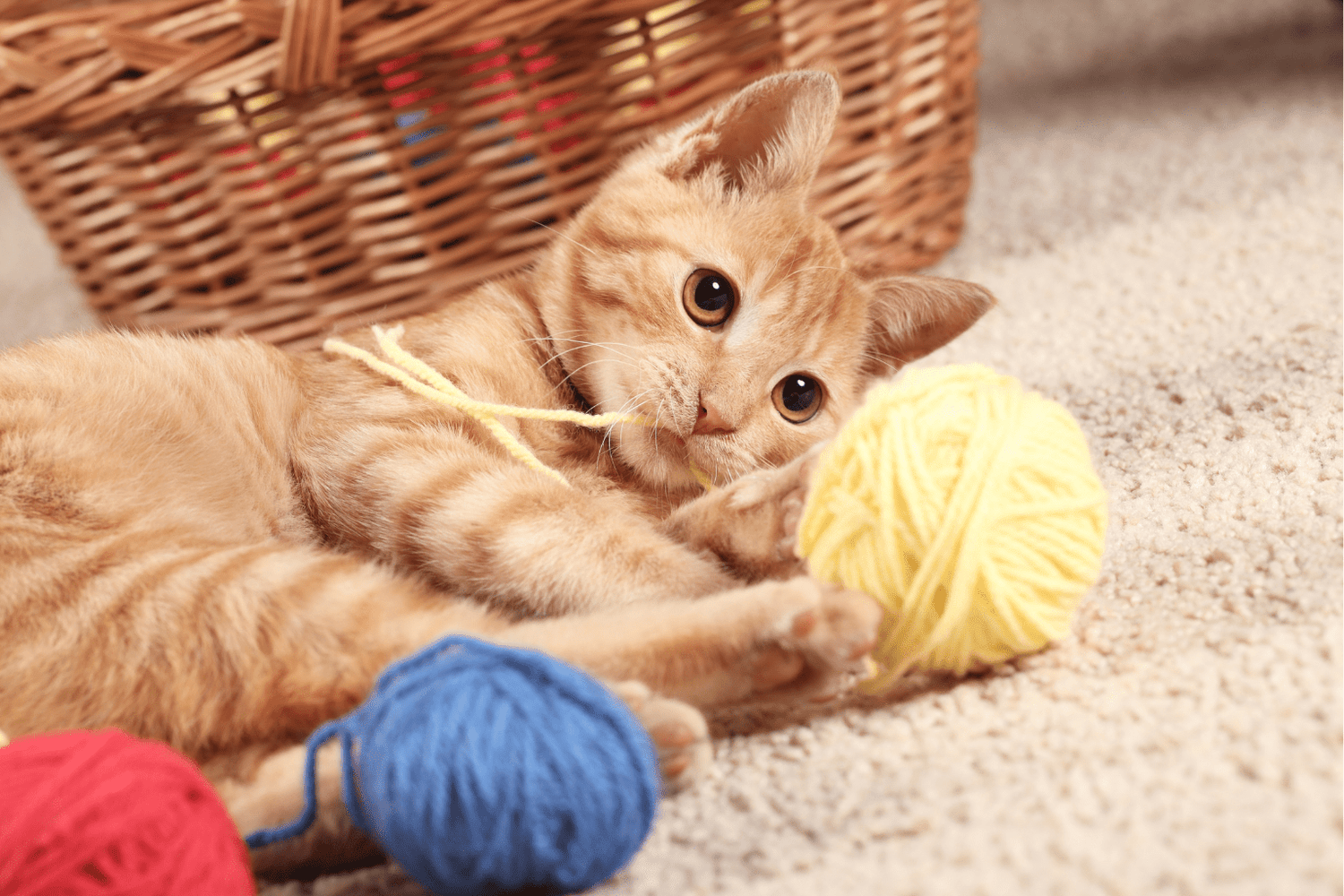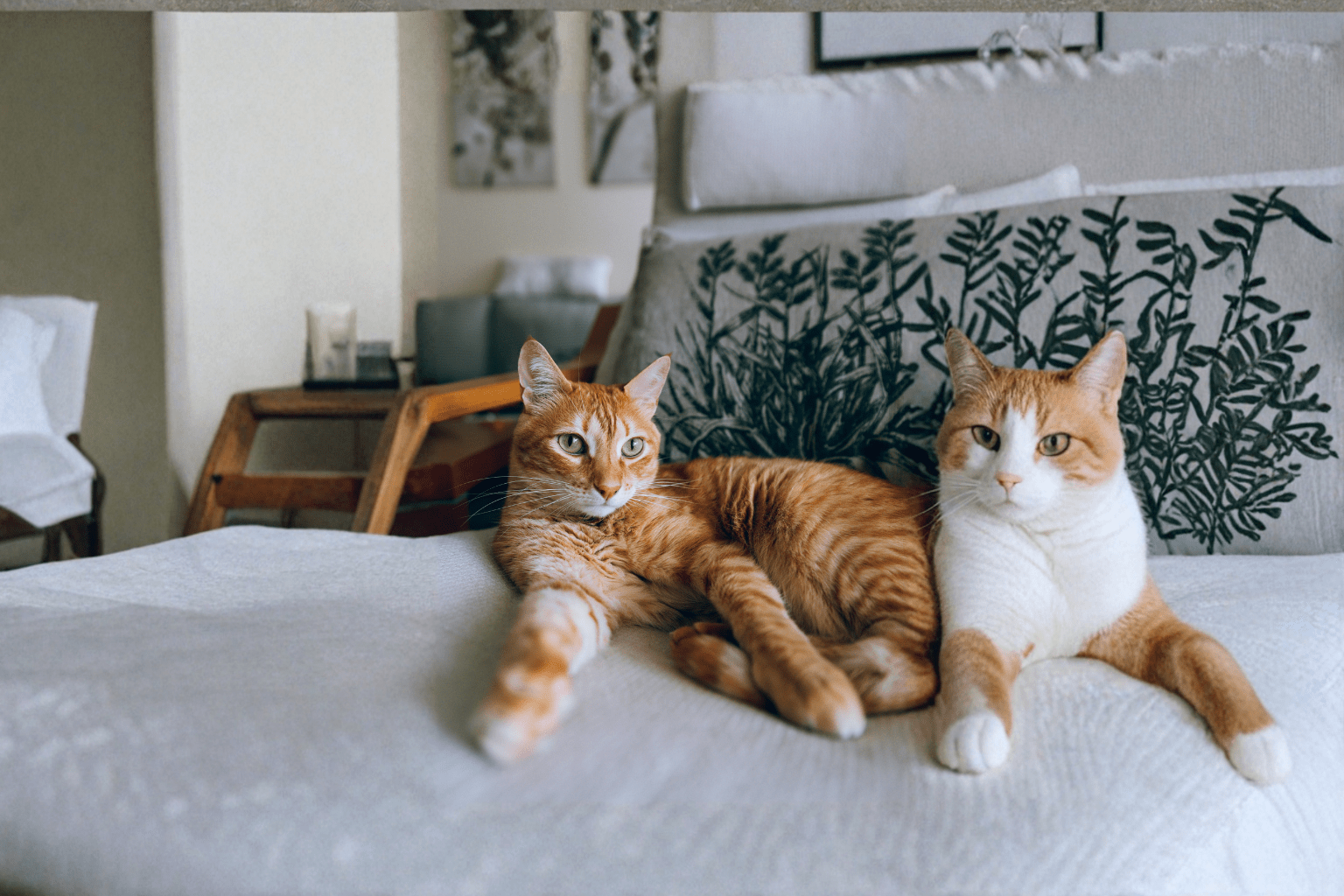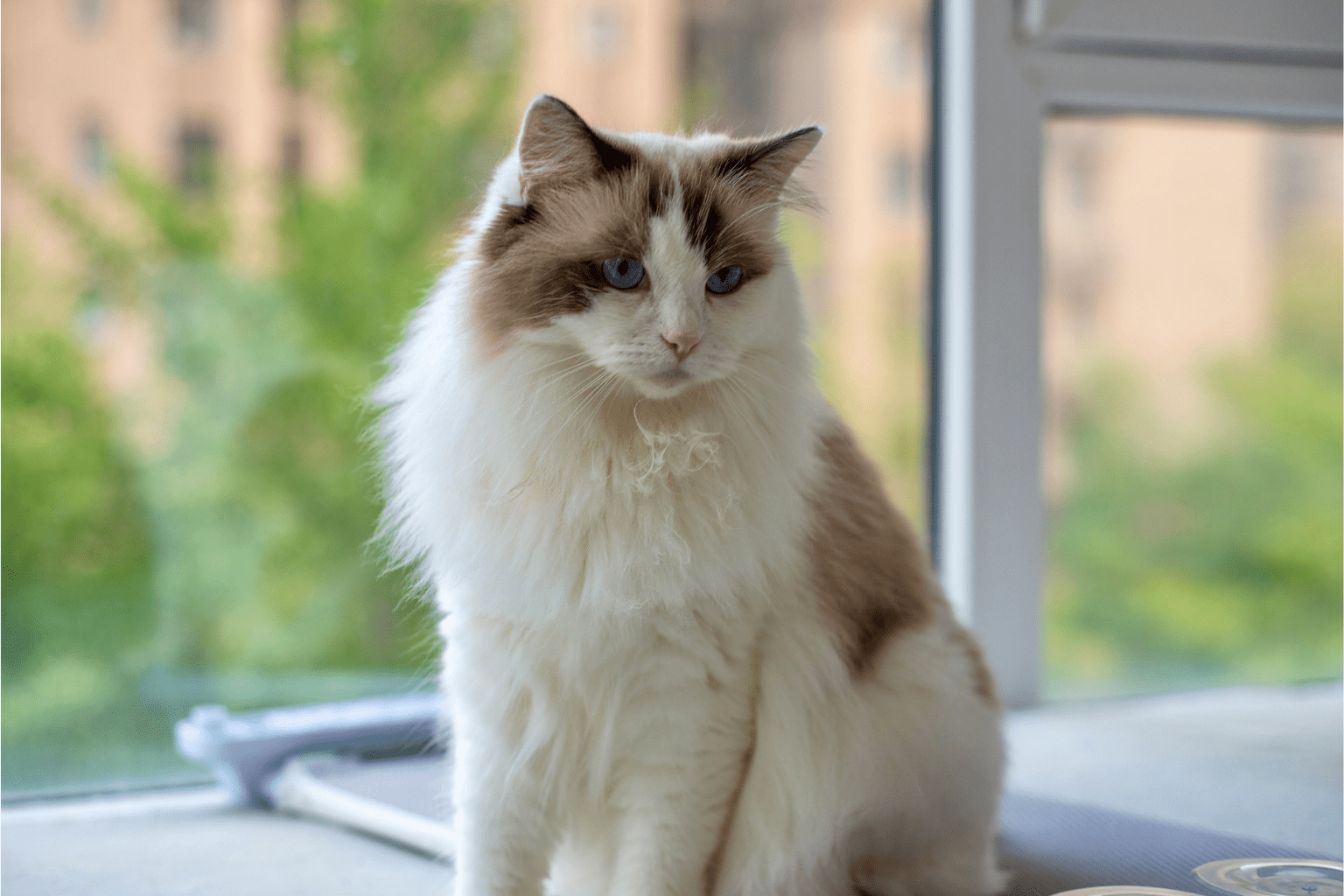Key Takeaways
- Mental stimulation is as important as physical exercise for cats' well-being.
- Enrichment activities can help reduce anxiety and boredom in indoor cats.
- Proper enrichment transforms cats into confident and content companions.
- Experience in natural wellness highlights the benefits of targeted enrichment for cats.
Table of Contents
- What Is Cat Enrichment and Why Does It Matter for Indoor Cats?
- Types of Cat Enrichment: The Five Pillars Explained
- How to Start, Introducing Enrichment to Any Cat
- Interactive Play, Awakening the Hunter in Your Cat
- Food & Foraging: Feed Your Cat's Curiosity
- Environmental & Sensory Upgrades: Transform Your Cat's World
- Comfort & Calming: Creating Safe Spaces for All Cats
- DIY Enrichment on a Budget: Creative Ideas for Every Home
- Social & Mental Stimulation: Beyond Playtime
Enrichment Activities for Cats: Keep Your Indoor Cat Thriving, Happy, and Healthy
When my Border Collie mix Tango started showing signs of restlessness despite our daily walks, I learned that mental stimulation matters just as much as physical exercise. The same principle applies to our feline friends, perhaps even more so. As someone who's spent over a decade helping pet parents navigate natural wellness, I've seen how the right enrichment activities for cats transform anxious, bored kitties into confident, content companions.
Every cat deserves mental, physical, and emotional enrichment. It's not a luxury, it's essential for their wellbeing. Whether you're caring for a playful kitten or a distinguished senior, enrichment activities unlock your cat's natural instincts and create deeper bonds between you both.
For cats who experience anxiety or stress, incorporating natural calming support alongside enrichment can make a significant difference. And if your cat struggles with allergies that impact their comfort and play, consider adding allergy relief and immune support to their routine for a holistic approach to wellness.
What Is Cat Enrichment and Why Does It Matter for Indoor Cats?
Cat enrichment means providing activities and environments that stimulate your cat’s mind and body. For indoor cats, enrichment is especially important because they don’t have the daily variety and challenges of outdoor life. Without enough stimulation, cats can become bored, anxious, or even develop unwanted behaviors like scratching furniture or over-grooming. Enrichment helps our cats stay curious, confident, and content, no matter their age or personality.
Types of Cat Enrichment: The Five Pillars Explained

Understanding the different types of enrichment helps you create a well-rounded experience for your cat. Think of these five pillars as building blocks, most cats benefit from elements of each category, though individual preferences vary.
Physical enrichment focuses on movement and exercise through climbing structures, interactive toys, and spaces that encourage natural athleticism. Mental enrichment challenges your cat's problem-solving abilities with puzzle feeders, training sessions, and novel experiences that require thinking.
Sensory enrichment engages sight, smell, hearing, and touch through window views, safe scents, varied textures, and appropriate sounds. Social enrichment nurtures bonds with humans and other pets through interactive play and positive interactions. Finally, nutritional enrichment transforms mealtime into engaging activities through food puzzles and foraging opportunities.
| Enrichment Type | Examples | Key Benefits |
|---|---|---|
| Physical | Cat trees, wand toys, climbing shelves | Maintains fitness, prevents obesity |
| Mental | Puzzle feeders, clicker training, new experiences | Reduces boredom, builds confidence |
| Sensory | Bird watching, safe herbs, textured surfaces | Stimulates natural curiosity |
| Social | Interactive play, gentle handling, companionship | Strengthens human-cat bonds |
| Nutritional | Food puzzles, scatter feeding, treat games | Slows eating, mimics hunting |
How to Start, Introducing Enrichment to Any Cat
The key to successful enrichment lies in observation and patience. Watch how your cat naturally plays, rests, and explores. Does she prefer stalking low to the ground or leaping from heights? Does he investigate new objects cautiously or dive right in? These preferences guide your enrichment choices.
Start slowly with one new activity every 2-3 days. Begin with 5-10 minute sessions once or twice daily, gradually increasing as your cat shows interest. Use gentle encouragement and small treats to build positive associations, but never force participation.
Enrichment proves especially valuable during transition periods, moving homes, introducing new pets, or helping senior cats stay mentally sharp. For shy or senior cats, focus on comfort-based activities like cozy bedding, gentle play, and safe hideaways. Remember, every cat is unique, so let your cat set the pace and celebrate small wins along the way.
Interactive Play, Awakening the Hunter in Your Cat
The most rewarding enrichment activities for cats tap into their natural predatory instincts. Interactive play doesn't just burn energy, it satisfies deep psychological needs that indoor cats often miss. When done right, these sessions strengthen your bond while giving your cat the thrill of a successful "hunt."
If your cat experiences joint stiffness or discomfort that limits play, supporting their mobility with a joint pain relief remedy can help them fully enjoy interactive sessions.
Wand and Teaser Toys
Best for: Daily exercise and bonding sessions
Master the art of "playing prey" by moving wand toys in erratic patterns, quick darts, sudden stops, and brief hiding moments under furniture. Keep sessions to 5-10 minutes to match a cat's natural hunting bursts. Always end with a "catch" by letting your cat grab and kick the toy, followed by a small treat to complete the hunting sequence.
Safety matters: store wand toys after each session since unsupervised cats can get tangled in strings. Our community member Sarah shared how her tabby Willow transformed from a lethargic couch cat to an eager hunter after just two weeks of consistent evening wand play.
Laser Pointer Games (Used Mindfully)
Best for: Quick energy bursts and targeting practice
Laser pointers can frustrate cats if they never "catch" anything. Always conclude laser sessions by tossing a physical toy where the dot disappears, this gives your cat the satisfaction of a successful hunt. Keep sessions brief (under 5 minutes) and never shine the light directly at eyes.
Self-Play Essentials
Best for: Independent cats and busy pet parents
Rotate toys every 3-4 days to maintain novelty. Simple cardboard boxes with holes cut for pouncing, paper bags (handles removed), and battery-free motion toys keep cats engaged when you're not available. Store unused toys with a light sprinkle of catnip to refresh their appeal.
Did You Know? Cats need variety in their play just like humans need variety in entertainment. The same toy every day quickly becomes "furniture" they ignore.
Food & Foraging: Feed Your Cat's Curiosity

Transform mealtime into mental stimulation by making your cat "work" for food. This mirrors natural foraging behavior and slows down fast eaters while providing satisfying problem-solving challenges.
For more ideas on what to feed your cat and which foods to avoid, check out this guide on the best and worst human foods for cats.
Puzzle and Treat Dispensers
Best for: Overeaters and bored cats
Place one-quarter of your cat's daily kibble in puzzle feeders to extend feeding time from 30 seconds to 10-15 minutes. This forces the natural "forage and feast" rhythm that prevents gulping and reduces post-meal vomiting. Start with simple puzzles before advancing to complex multi-step feeders.
Recent research has shown that using food puzzles can significantly improve feline wellbeing. For more details, see this study on the benefits of food puzzles for cats.
| Feeding Method | Eating Time | Mental Engagement | Mess Level |
|---|---|---|---|
| Traditional Bowl | 30 seconds | None | Low |
| Puzzle Feeder | 10-15 minutes | High | Medium |
| Scatter Feeding | 5-10 minutes | Medium | Low |
DIY Food Enrichment
Best for: Budget-conscious pet parents
Create a toilet paper roll treat dispenser in under 3 minutes: fold both ends partially closed, add 5-10 pieces of kibble, then fold completely. Your cat will bat and roll it until treats fall out. For scatter feeding, simply hide small portions of kibble in 3-4 different locations around your home.
Solutions for Overeaters or Finicky Cats
Watch for signs of food anxiety: aggressive guarding, frantic eating, or refusing to engage with puzzles. In multi-cat homes, provide separate feeding stations to prevent competition stress. If your cat seems overwhelmed by food games, start with the simplest scatter feeding before introducing mechanical puzzles.
Environmental & Sensory Upgrades: Transform Your Cat's World
Creating a cat-centric environment means thinking vertically and engaging all five senses. These cat enrichment ideas turn ordinary homes into stimulating territories that satisfy natural climbing, perching, and exploration instincts.
For more ways to support your cat's overall health and happiness, explore these natural cat supplements for treating common health issues in cats and kittens.
Building Up (Vertical & Elevated Spaces)
Best for: Apartment cats and multi-pet households
Cats feel secure when they can survey their territory from above. Install sturdy cat trees, window perches, or floating shelves at least 24 inches high. Check stability every 6 months, wobbly perches create anxiety rather than comfort. Even simple furniture rearrangement to create "stepping stone" paths to high surfaces can dramatically expand your cat's usable space.
Outdoor Flavors Indoors
Best for: Indoor cats craving nature experiences
Create safe outdoor connections through screened window boxes or simple patio enclosures using pet-safe mesh. For supervised adventures, leash-train your cat gradually, start with 10-15 minutes of harness wearing indoors, then progress to short outdoor sessions 3-4 times weekly. Cat strollers offer another option for cats who prefer observation over walking.
Sensory Experiences
Best for: Stimulation-seeking cats of all ages
Install bird feeders outside favorite windows to create "cat TV." Rotate new scents weekly by placing herb sachets or a worn shirt from family members in your cat's preferred resting spots. Visual entertainment through cat-specific YouTube videos or nature screensavers works well in 20-minute sessions, 1-2 times weekly.
| Sensory Type | Examples | Safe Frequency | Best Time |
|---|---|---|---|
| Visual | Bird feeders, cat videos | Daily | Morning/evening |
| Scent | Herb sachets, catnip | 2-3 times weekly | Afternoon |
| Auditory | Nature sounds, classical music | 15-30 minutes daily | Quiet hours |
Comfort & Calming: Creating Safe Spaces for All Cats
Not all enrichment activities for cats involve high energy. Emotional enrichment through calming spaces supports anxious, senior, or recovering cats who need gentle stimulation without stress.
For cats who struggle with aggression or behavioral issues, the Peaceful Paws Aggression & Behavioral Remedy can be a helpful addition to your calming strategies.
Calming Zones & Retreats
Best for: Anxious cats and multi-pet households
Designate quiet corners with soft bedding where cats can retreat undisturbed. Use familiar blankets refreshed every 2-3 days with an unwashed shirt carrying your scent. These spaces become essential during storms, after vet visits, or when introducing new household members.
Position retreat areas away from high-traffic zones and food bowls. Elevated hideaways work especially well since height provides security while maintaining the calming environment cats need for emotional balance.
Natural Calming Support & Community Solutions
Best for: Cats needing gentle behavioral support
Holistic wellness approaches complement environmental enrichment beautifully. Our community member Bailey found peace in her busy three-cat household when her pet parent combined dedicated retreat spaces with our gentle, natural calming pellets as part of her daily routine.
About Pheromones: Synthetic calming pheromones can help some cats, but they work best when combined with proper environmental enrichment rather than as standalone solutions.
DIY Enrichment on a Budget: Creative Ideas for Every Home

Effective cat enrichment ideas don't require expensive purchases. Household items often make the most engaging toys when combined with creativity and safety awareness.
For more inspiration, see our tips on what's essential for cats to thrive at home.
Household Treasures
Best for: Creative pet parents and rescue situations
Milk caps, wine corks, and cardboard tubes become instant entertainment when introduced safely. Our community cats consistently favor simple cardboard box forts over expensive toys. Create one in three steps: cut entry holes in a large box, add smaller boxes inside for levels, then place treats in different compartments.
Always supervise initial play with new DIY toys and remove any items showing wear or small pieces that could be swallowed.
Homemade Training & Trick Games
Best for: Bonding and mental stimulation
Basic clicker training transforms everyday interactions into enriching games. Teach "sit," "high-five," or "spin" using 5-minute sessions with gentle praise and healthy treats. Even cats who seem untrainable often respond when sessions stay brief and positive.
Social & Mental Stimulation: Beyond Playtime
Advanced enrichment activities for cats include training, social skills, and cognitive challenges that strengthen the human-cat bond while developing your cat's problem-solving abilities.
For multi-cat homes, supporting overall wellness with cat health product bundles can help ensure every feline gets the most from their enrichment activities.
If you're interested in the science behind feline enrichment and behavior, you can explore this external research article on environmental enrichment for cats.
Positive Reinforcement Games
Best for: Intelligent cats and strengthening relationships
Clicker training works remarkably well with cats when broken into 2-3 minute sessions. Start with "sit" by holding a treat above your cat's head, most will naturally sit to look up. Click and reward immediately. Progress to "target" training where cats touch a specific object, then advance to "come" commands.
Always end training sessions on a successful note, even if it means simplifying the final request. This builds confidence and eagerness for future sessions.
Multi-Cat and Multi-Pet Households
For tips on supporting your cat's kidney health as part of a holistic enrichment plan, read these tips for preventing kidney disease in cats.
Not a substitute for professional veterinary advice.
Frequently Asked Questions
What are the five pillars of cat enrichment and how do they benefit my indoor cat?
The five pillars of cat enrichment are interactive play, food and foraging, environmental and sensory upgrades, comfort and calming, and social and mental stimulation. Together, they provide a balanced mix of mental and physical challenges that keep your indoor cat curious, confident, and content. This well-rounded approach helps reduce anxiety and boredom, promoting a happier, healthier life.
How can I introduce enrichment activities to a cat that is anxious or stressed?
Start slowly by offering gentle, low-pressure activities like soft interactive play or cozy hiding spots to build your cat’s confidence. Pair enrichment with natural calming support to ease stress and create positive associations. Patience and observing your cat’s comfort level will help you tailor activities that feel safe and enjoyable for them.
What are some budget-friendly DIY enrichment ideas to keep my cat mentally and physically stimulated?
Simple DIY ideas include creating cardboard box mazes, hiding treats in paper bags, or making homemade puzzle feeders from everyday items. Even a window perch for bird-watching or a string on a stick can spark your cat’s curiosity and playfulness without breaking the bank. These activities engage your cat’s natural instincts and keep their mind active.
Why is mental stimulation as important as physical exercise for indoor cats' overall well-being?
Mental stimulation challenges your cat’s brain, preventing boredom and reducing stress, which can lead to unwanted behaviors. Just like physical exercise strengthens their body, mental enrichment keeps their mind sharp and engaged. Together, they support a balanced, confident, and content indoor cat.



